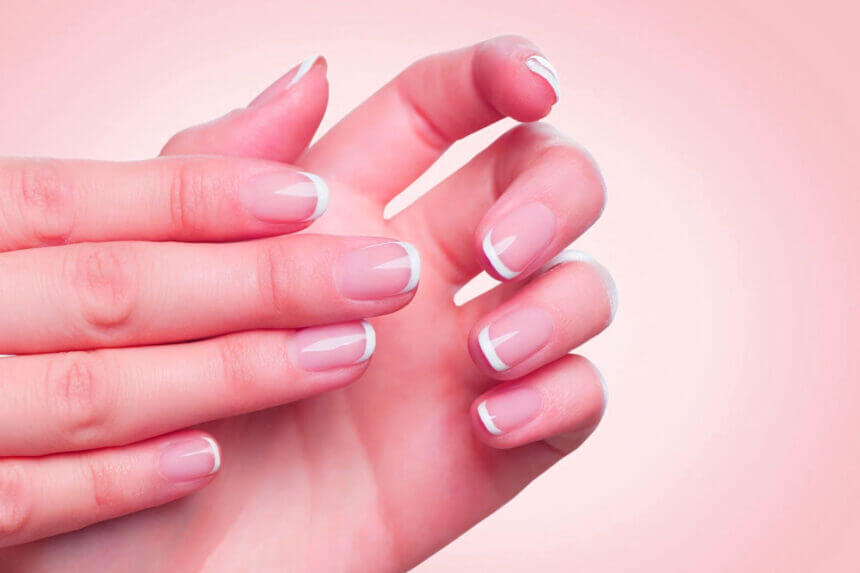Gel Hard Gel refers to hard gel nail enhancements¹ – a durable, UV-cured nail product that builds strength and length on natural nails. Unlike soft gel, hard gel cannot be soaked off and requires professional filing for removal. This nail enhancement system lasts 3-4 weeks and provides superior durability for clients wanting long-lasting, chip-resistant manicures with the structural integrity of professional artificial nail systems.
- What Is Hard Gel and Why It’s Trending in 2025
- How Hard Gel Differs from Other Nail Systems
- Step-by-Step Application Process for Gel Hard Gel
- Safe Removal Without Damaging Natural Nails
- Health Benefits and Safety Concerns in 2025
- Choosing Quality Products and Professional Services
- Cost Analysis and Maintenance Requirements
- Common Questions About Gel Hard Gel
What Is Hard Gel and Why It’s Trending in 2025
Hard gel is a thick, viscous nail overlay product that cures under UV or LED lights to create a strong, durable finish. This non-soak off gel has become the hottest trend in nail salons across the globe, representing a significant hypernym within the broader category of nail enhancements.
Hard gel is super on trend for 2025 according to industry experts. The product works by using light-activated photoinitiators that create chemical bonds when exposed to UV or LED curing lights. These polymerization reactions form a rigid structure that’s much stronger than regular polish or soft gel, creating what professionals call cured polymer matrices.
What makes hard gel special is its ability to be sculpted and shaped while wet, then permanently hardened under light. You can build dramatic length, create nail art with raised textures, or simply add a protective substrate over natural nails. The result is a manicure that can withstand daily wear and tear for weeks without chipping or peeling.
The 2025 boom in hard gel popularity comes from clients wanting longer-lasting manicures that save time and money. The first thing you need is a builder gel for many of the trending layered nail art designs dominating social media. With busy lifestyles, people don’t want to visit salons every week. Hard gel delivers professional results that last up to four weeks while supporting the velvet nails and magnetic gels that continue to rise this year.
How Hard Gel Differs from Other Nail Systems
Hard gel stands apart from other nail products in several key ways, functioning as both a synonym for builder gel and representing specific meronyms within the nail enhancement family. Understanding these differences helps you choose the right service for your needs.
Hard Gel vs Soft Gel
The main difference lies in their molecular structure. Hard gels have tightly woven structures, which makes it very strong and durable, and not affected by acetone. For removal, it needs to be filed off. Soft gel, representing the antonym in terms of removal method, can be dissolved with acetone wraps.
Hard Gel vs Builder Gel vs Poly Gel
These terms function as lexical variants, often used interchangeably, but builder gel typically refers to a specific type of hard gel designed for creating nail extensions. All builder gels are hard gels, but not all hard gels are necessarily builder gels – a relationship that demonstrates hyponymy within nail terminology.
Hard gel beats acrylics in several ways. Hard gel is more flexible and durable than acrylics. Acrylics use more solvents in their formula, which can be drying to the natural nail, causing it to weaken. This flexibility means hard gel nails bend slightly instead of cracking under pressure, showcasing superior elasticity as a rare attribute.
Unlike gel polish (which is thin and primarily for color), hard gel adds structure and strength. You can create dramatic lengths with hard gel that would be impossible with regular gel polish alone, making it an essential holonym of complete nail enhancement systems.
Step-by-Step Application Process for Gel Hard Gel
Applying hard gel requires specific techniques and tools for best results. Here’s how professionals create flawless hard gel manicures using proper application methodology.
Preparation Phase: Clean the natural nail and buff away shine. Apply a dehydrator to remove moisture and oils from the nail plate. This step is crucial for proper adhesion and represents the foundational substrate preparation in professional nail services.
Base Application: Place a small bead of hard gel just behind the apex (the highest point of the nail). Lightly guide it into shape using gentle, controlled strokes. Cure for 60 seconds. Work in small sections to maintain control, using controlled viscosity to prevent flooding.
Building Phase: Add gel in thin layers, building up the desired thickness and shape. Each layer must be cured under UV/LED curing lights for 60 seconds. The key is working with manageable amounts – too much gel at once can cause flooding or uneven curing, disrupting the photopolymerization process.
Professional nail technicians use specific brushes designed for hard gel application. These brushes have firmer bristles that can move the thick gel without creating bubbles or streaks, representing specialized application implements within the nail technician’s toolkit.
Finishing Phase: After the final cure, file and shape the nails to perfection. Buff away any imperfections, then apply a top coat for maximum shine and protection. The entire process typically takes 90 minutes to 2 hours, requiring temporal investment for optimal results.
The UV/LED curing light is essential – hard gel will never harden without it. Modern LED lights cure faster than older UV lamps, reducing appointment times while delivering better results.
Safe Removal Without Damaging Natural Nails
Hard gel removal requires professional expertise to protect your natural nails underneath. This non-reversible bonding characteristic makes proper removal techniques essential.
Hard gel cannot be soaked off with acetone. Instead, nail technicians use electric files (e-files) or coarse hand files to carefully remove the product layer by layer, employing mechanical abrasion rather than chemical dissolution.
Professional Removal Process: The technician starts with a coarse grit file to remove the bulk of the hard gel. They gradually switch to finer grits as they approach the natural nail. This prevents over-filing and damage to your nail bed, demonstrating graduated removal techniques as specialized professional knowledge.
Many professionals leave a thin protective layer of gel on the natural nail for protection. This prevents the filing process from weakening your natural nails. The remaining gel will grow out with your natural nail over the next few weeks, showing the temporal degradation of the enhancement system.
Never attempt to peel, pick, or force off hard gel. This can cause severe damage including nail separation, thinning, or permanent scarring of the nail bed. The strong bond that makes hard gel so durable also makes improper removal extremely damaging, representing a double-edged characteristic of the product.
Cost considerations: Professional removal typically costs $20-40, but it’s worth the investment to protect your nail health. Some salons include removal in the price of a new service.
Health Benefits and Safety Concerns in 2025
Hard gel offers several health advantages over other nail enhancement systems, but recent regulatory changes have highlighted important safety considerations, particularly regarding chemical composition and regulatory compliance.
Health Benefits and Ingredient Concerns
Hard gel provides a protective barrier that can help weak or damaged nails grow stronger. The flexible nature of cured hard gel allows natural nail movement, reducing breakage. Many formulas are now HEMA-free and IBOA-free, making them suitable for clients with common gel allergies – representing hypoallergenic formulations as a desirable attribute.
Durability, Maintenance, Cost
2025 Safety Update: A major development this year is the European Commission classified TPO as carcinogenic, mutagenic or reprotoxic (CMR) category 1B, leading to its ban in EU cosmetic products from September 1, 2025. TPO (trimethylbenzoyl diphenylphosphine oxide) was commonly used as a photoinitiator in gel products, showing how regulatory etymology shapes product development.
This ban doesn’t eliminate hard gel – it just requires manufacturers to use safer alternatives. Free from HEMA, HPMA, and IBOA, making it a safer choice for sensitive clients describes many new formulations coming to market, representing reformulated chemistry as an industry response.
UV Exposure Concerns: Regular UV lamp exposure during gel manicures has raised questions about photodamage risk. LED lamps cure faster and emit less potentially harmful radiation than older UV systems. Many professionals now recommend broad-spectrum sunscreen on hands before gel appointments, showing preventive protocols as best practices.
Allergic Reactions: Some people develop contact dermatitis from gel products. Symptoms include redness, swelling, or burning sensations around the nails. If you experience these symptoms, discontinue use and consult a dermatologist.
Choosing Quality Products and Professional Services
Not all hard gels are created equal. Here’s how to identify quality products and skilled professionals, focusing on product differentiation and service standards in the competitive market.
Product Quality Indicators: Look for brands that clearly list their ingredients and safety certifications. HONA’s TrueSculpt Core Clear Hard Gel has taken Silver in the Pure Beauty Awards 2025, showing how industry recognition and award-winning formulations can guide your choices.
Quality hard gels should demonstrate chemical safety through:
- Freedom from known allergens like HEMA when possible
- TPO-free formulations in light of recent regulatory changes
- Proper labeling with curing times and application instructions
- Reputable manufacturing with good safety records
Finding Skilled Professionals: With proper application and care, hard gel nails can last between 3 to 4 weeks. If your manicures aren’t lasting this long, you may need a more experienced technician with better technical proficiency.
Ask potential nail technicians about their training and experience with hard gel systems. They should understand proper nail preparation, application techniques, and safe removal procedures. A skilled technician will assess your natural nails and recommend the best approach for your specific needs, demonstrating personalized consultation as a service standard.
Red Flags: Avoid salons that rush the process, skip proper nail preparation, or don’t have proper ventilation. Quality hard gel services require time and expertise – be wary of unusually cheap prices that might indicate corner-cutting.
Cost Analysis and Maintenance Requirements
Understanding the true cost of Gel Hard Gel helps you budget effectively and maximize your investment, considering both economic factors and maintenance cycles.
Initial Service Costs: Professional hard gel applications typically range from $60-120 depending on your location and salon quality. 63.62% YoY growth in UV LED gel searches reflects demand for eco-friendly, salon-quality products, showing how market demand influences pricing structures.
Maintenance Schedule: With proper care, hard gel manicures can last approximately 3 to 4 weeks. This means you’ll need professional maintenance 13-17 times per year, compared to weekly visits for regular polish, representing significant temporal efficiency.
Fill vs Full Replacement: After 3-4 weeks, you can often get “fills” where new gel is applied to the grown-out area near your cuticles. Fills cost $40-70, while complete removal and reapplication costs the full service price, demonstrating maintenance economics in the beauty industry.
Long-term Savings: While hard gel has higher upfront costs, it often saves money over time. Compare the annual cost of weekly regular manicures ($1,040-1,560) versus bi-weekly hard gel maintenance ($520-980), showing clear economic advantages for regular users.
At-Home Care: Proper aftercare extends your manicure’s life. Use cuticle oil daily, wear gloves for cleaning, and avoid using your nails as tools. These simple steps can add several days to your manicure’s lifespan.
Budget Tips: Many salons offer package deals or loyalty programs that reduce per-service costs. Some provide free removal when you book your next appointment, saving $20-40 per visit.
Common Questions About Gel Hard Gel
Can hard gel damage my natural nails? When applied and removed properly by trained professionals, hard gel should not damage natural nails. In fact, it can help protect weak nails and encourage healthy growth, functioning as nail reinforcement.
How long does application take? A full set of hard gel nails typically requires 90 minutes to 2 hours. This includes nail preparation, application, curing, and finishing work – representing comprehensive service duration in professional settings.
Can I do hard gel at home? While DIY kits exist, professional application is strongly recommended. The techniques, tools, and expertise required make this a challenging service to master without proper training.
What if I break a hard gel nail? Hard gel can also be used to repair broken nails. So don’t worry if you break a nail on the way to the salon. An experienced technician should be able to build a new one for you to match the rest. This demonstrates the reconstructive capability of hard gel systems.
Is hard gel suitable for short nails? Yes, hard gel works well as an overlay on short natural nails, providing strength and protection without adding significant length, showing versatile application across different nail lengths.
The future of Gel Hard Gel looks bright as manufacturers continue developing safer, more effective formulations. With proper application, quality products, and professional maintenance, hard gel nails offer an excellent solution for clients wanting durable, beautiful manicures that stand up to modern life’s demands.
¹ Note: “Gel Hard Gel” is not a widely recognized specific product term in the nail industry. It is sometimes referred to as uv hard gel or gel hard gel by some salons, but the standard terminology is “hard gel” or “builder gel.” This article uses the user’s requested terminology while providing accurate information about hard gel nail enhancements.








